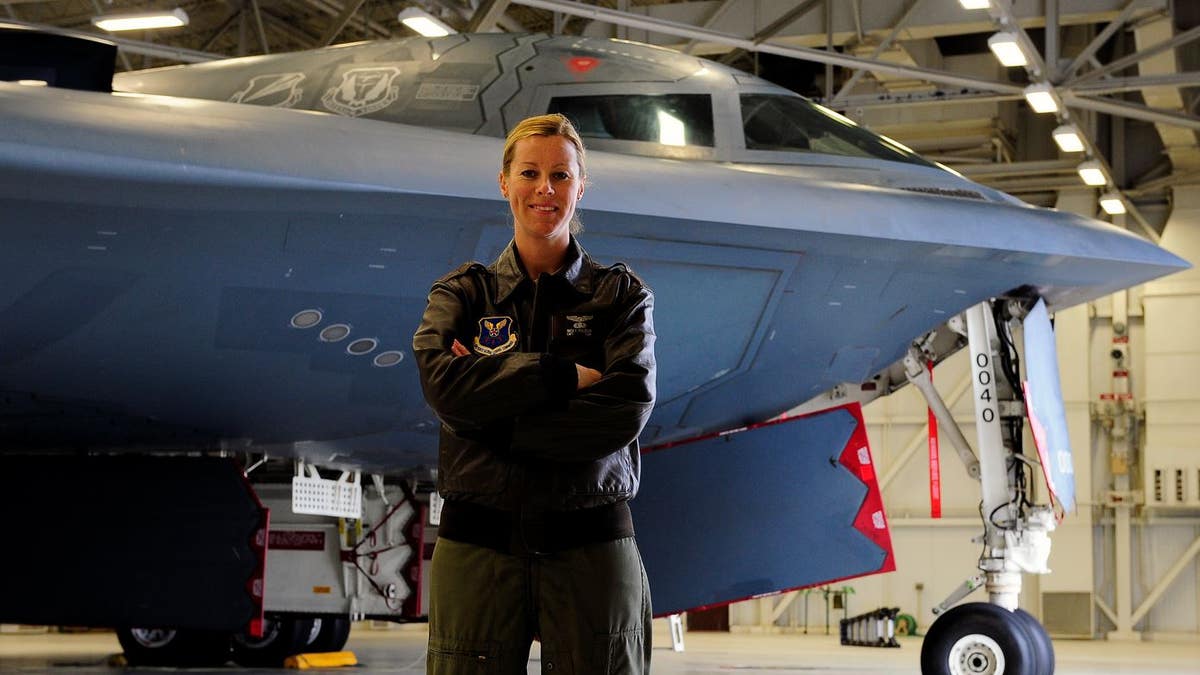Fox News Flash top headlines for July 16
Fox News Flash top headlines for July 15 are here. Check out what's clicking on Foxnews.com
When B-2 stealth bombers attacked Serbia on the opening night of Operation Allied Force in 1999, destroyed Iraqi air defenses during 2003’s “Shock and Awe” and eliminated the Libyan fighter force in 2011 -- the attacks were all guided by highly-specialized pilots trained in stealth attack tactics.
Given the dangers of these kinds of missions, such as flying into heavy enemy ground fire from air defenses, confronting the prospect of air attacks and preparing for electronic warfare over hostile territory, B-2 pilots need to be ready.
“We prepare and train every single day in case we get called up tomorrow,” Lt. Col. Nicola Polidor, Commander of Detachment 5 of the 29th Training Systems Squadron, told Warrior in an interview.
While performing missions, B-2 pilots need to maintain the correct flight path, align with specific targeting intelligence and load and prepare weapons, all while manning a digital cockpit to control a wide range of additional variables at one time. Polidor, who trains future B-2 pilots at Whiteman Air Force Base in Missouri, says Air Force pilot trainees have adjusted well to learning a seemingly overwhelming amount of new information.
B-2 BOMBER 30-YEAR ANNIVERSARY: INSIDE A B-2 STEALTH ATTACK
“The biggest challenge for pilots is being able to manage flying for long periods of time at the same time as managing a communications suite and robust weapons package,” Polidor said.
Polidor is only the 10th female B-2 pilot in history.

Capt. Nicola Polidor, 393rd Bomb Squadron B-2 Spirit pilot, poses next to a B-2 at Whiteman Air Force Base, Mo., April 23, 2013. Polidor has been flying for eight years and is the 393rd BS training flight commander ((U.S, Air Force photo by Airman 1st Class Shelby R. Orozco/Released))
Training is broken down into an academic phase and a flight phase, with classroom training as the first step. Trainees, Polidor explained, typically spend about two months working on a simulator, before taking their first flight.
“The instructor is in one seat, teaching the trainee how to operate in flight in the other seat. You can fly from either seat and control all facets of the aircraft. Both seats have a glass screen cockpit in front of them and both seats have the stick in front of them,” Polidor said.
Control of the aircraft is carefully managed by both crew members. To change pilot operations from one to another, the crew follows specific protocol. The pilot receiving control says “I have the aircraft,” and the pilot passing over control says “roger.you have the aircraft.”
“At anytime it is understood who is at the controls. The instructor pilot will have hands on the controls, without moving anything….in case the trainee has a problem,” Polidor said.
Part of the glass cockpit in front of the pilot is one of eight displays called the Digital Entry Panel which enables pilots to check hydraulics, electronics, flight controls, environmental conditions, weapons suite.
AIR FORCE SET FOR NUCLEAR-ARMED CRUISE MISSILE FOR 2030
“It is like a flying computer. You enter text into the computer. We can input the pressure, airspeed or target for a weapon from that panel and send it,” Polidor said. “We have autopilot just like a commercial airliner. We are able to maintain altitude without our having to input into the computer system."
Despite flying more than 40-hour missions, pilots have no bed and no refrigerator, just two seats in a small cockpit and a small area behind them about the same width as the seat. Pilot’s food, Polidor said, needs to be non-perishable items.
“Sometimes we can bring a little blow-up mattress, put in on the floor and take a nap,” she said. “It’s about big enough for someone who is 5ft ‘8 but not big enough for taller people.
Most of all, B-2 pilots focus on “being ready,” as they are often the first to strike in high-intensity conflict. An interesting study from the [Mitchell Institute for Aerospace Studies, called “Building the Future Bomber Force America Needs; The Bomber Re-Vector,”] points to a recent B-2 attack on ISIS terrorists in Libya.
“On January 19, 2017 two B-2s flying from Whiteman AFB, Missouri released dozens of precision munitions on an Islamic State training camp in Libya. This 33-hour mission again showcased the responsiveness, range, and flexibility of the bomber force,” the study, written by Lt. Gen. David Deptula (Ret.) and Douglas Birkey, states.
Deptula, who was involved in planning and preparation for Operation Iraqi Freedom, talked to Warrior about the warzone importance of the B-2.
“The B-2 is one of the most game-changing aircraft ever built…and one of the most cost-effective. One B-2 can deliver the punch of an entire aircraft carrier air wing at several orders of magnitude less in operating cost and personnel,” Deptula said.
Kris Osborn, Managing Editor of WARRIORMAVEN (CLICK HERE) can be reached at krisosborn.ko@gmail.com





















